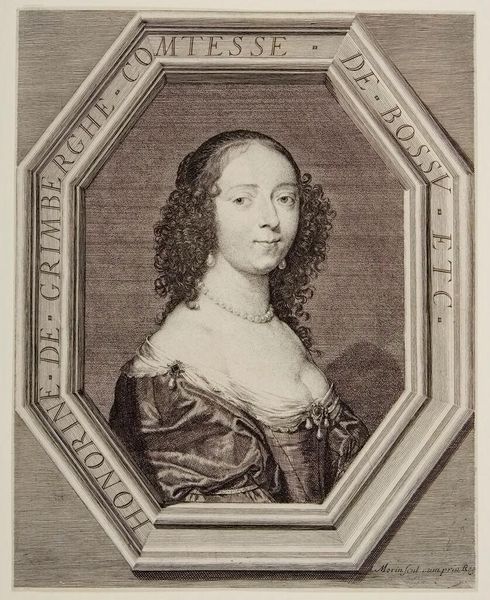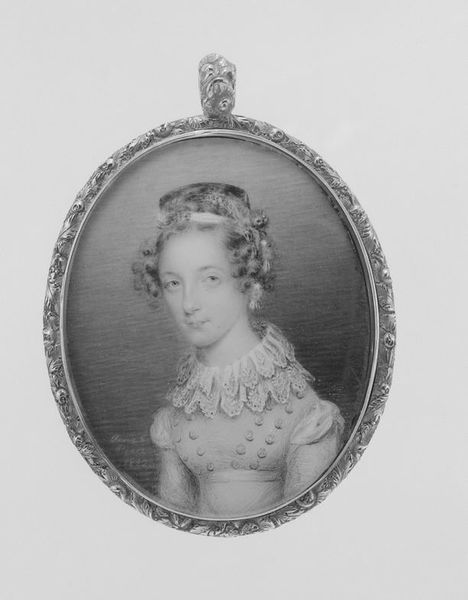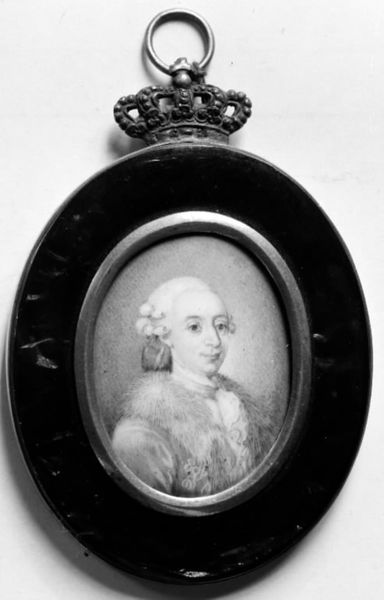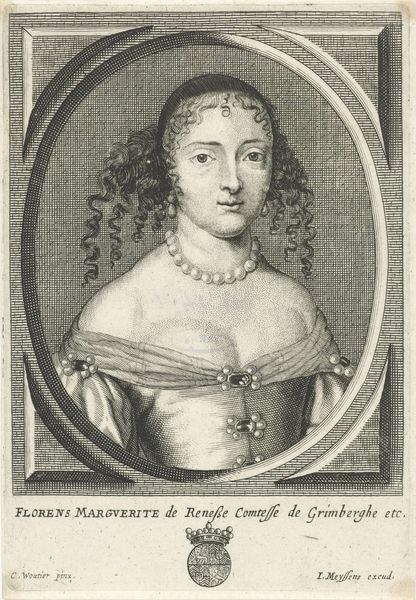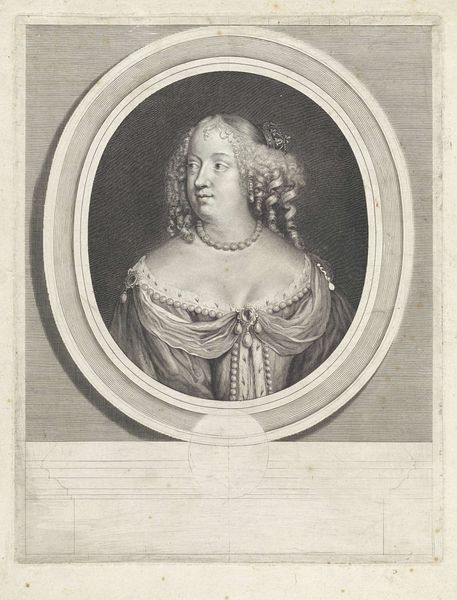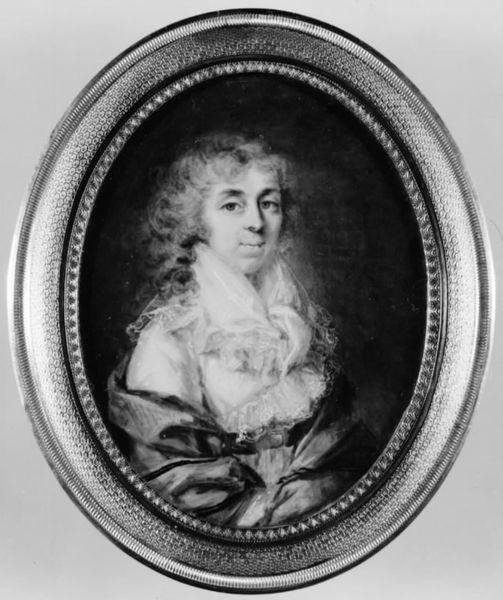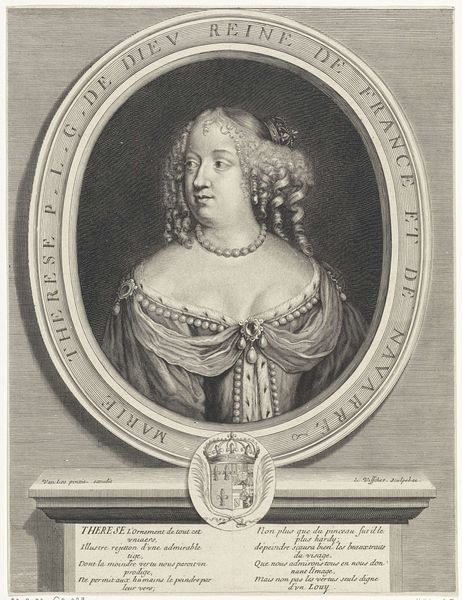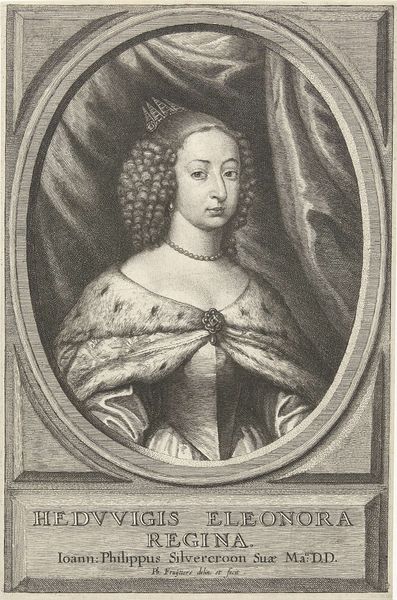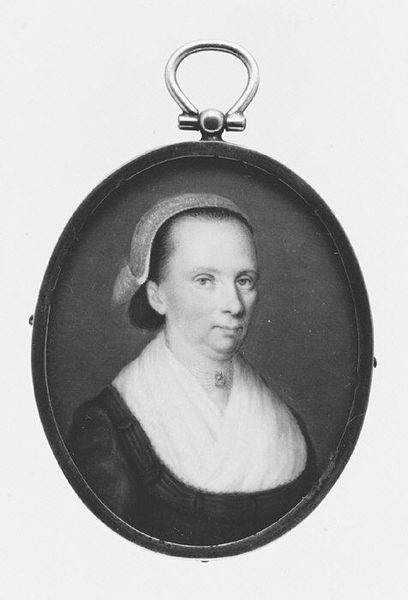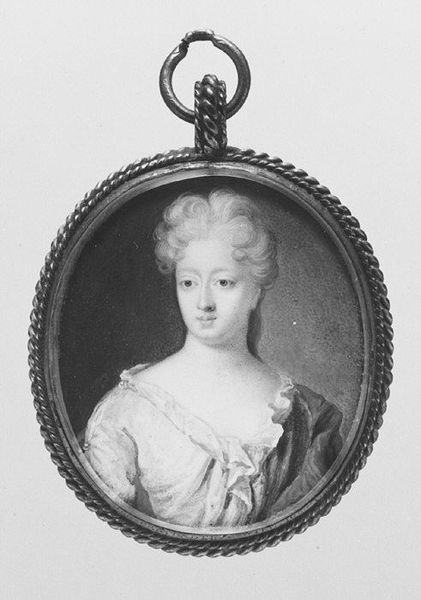
tempera, painting
#
portrait
#
baroque
#
tempera
#
painting
#
black and white
#
history-painting
#
miniature
Dimensions: Oval, 1 3/8 x 1 1/8 in. (36 x 30 mm)
Copyright: Public Domain
Curator: Let's consider this delicate piece, “Portrait of a Woman” by Jean Petitot, crafted sometime between 1627 and 1691. It’s currently residing here at the Metropolitan Museum of Art. Editor: The scale is immediately striking! Such intricacy on what appears to be a miniature... it almost has the weight of a jewel. A melancholic one, though. The grayness subdues what might be vibrant, even festive. Curator: The monochrome palette indeed limits a flamboyant reading, doesn't it? It's rendered in tempera, a meticulous medium, which lends itself to the sharp detailing of Baroque portraiture. Consider how the limited tonality forces us to focus on form. The composition’s dependence is clear through symmetry and line quality alone. Editor: The subject’s gaze is very carefully executed. There's a distinct intent in the contrast of textures too—the smoothness of the skin against the almost scribbled energy of the hair. Also, consider the presentation of women historically and her placement as a subject, the clothing embellishments speak volumes about class and expectations for beauty. Curator: Absolutely. The interplay of those textures is not accidental. The almost tangible pearls hint at societal standing and material wealth. In a broader context, consider portrait miniatures as diplomatic gifts, tokens of affection, objects signifying social status… Petitot’s mastery lies in the efficient capturing of the sitter’s essence. Editor: There's a certain tension here. I can see Baroque tendencies, yes. But that constrained palette feels... modern. Or rather, it transcends its historical moment through its stark simplicity. Perhaps it anticipated the rise of portrait photography and its reductionist appeal? Curator: That is quite a prescient way of thinking about this little piece of work! It reminds us how potent form can be irrespective of colour, or of its initial moment in history. Editor: A perfect snapshot, in a way, before snapshots were a possibility. It certainly provides much food for thought.
Comments
No comments
Be the first to comment and join the conversation on the ultimate creative platform.




